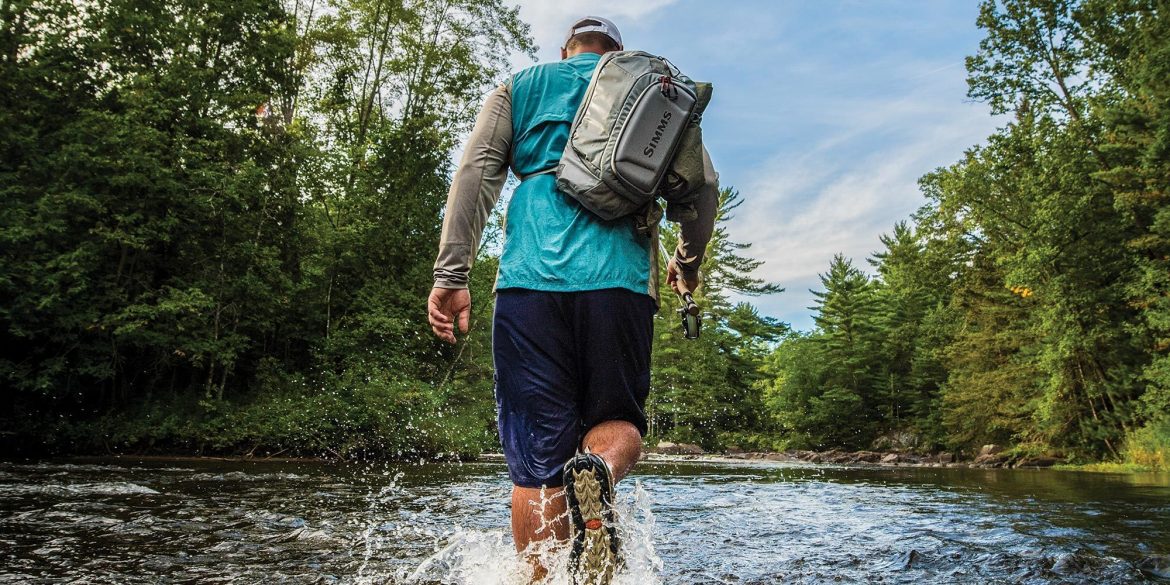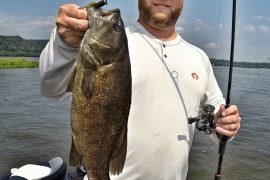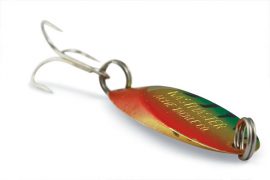
Summer can be cruel to a devout trout fisherman. I found that out during the relentless drought of 2016. By July, flows on the Farmington River—my home water in Connecticut—were reduced to a pathetic 60 cubic feet per second. It looked more like a rock garden than a river, forcing its browns to huddle up in scattered cool-water refuges. I had no choice but to give them a rest.
Still, it was summer and I wanted to flyfish. Luckily the nearby Housatonic was there to give me a fix. It was warmer than the Farmington, but its natural flow was a bountiful 250 cfs. And it held a thriving population of smallmouth bass. Though I’d fished for “Housy” smallmouths on and off over the years, last summer I piled up my trout fishing chips and went all in on bronze. Focusing exclusively on smallmouths for an entire late-summer season gave me a true crash course in the methods and approaches that can make or break you on a summer bass wade. There are certainly similarities between targeting skinny-river smallmouths and trout, but you can forget about micro bugs and 12-foot leaders. Here are the most critical smallie lessons I learned.
Have you ever thrown an articulated streamer into a pool of delicately sipping trout? At best, the fish will ignore it. At worst, they’ll scatter. Not so with smallies. Part of what makes them such exceptional fly targets is that going bigger, louder, and gaudier often draws more strikes when the action is slow than going dainty does. One evening, I was frustrated by a pod of bass that were taking small insects off the surface. Despite my impeccable drifts, they’d have nothing to do with my size 18 Light Cahill. Out of frustration, I tied on a big, ugly deer-hair streamer. Just before it hit the water, a 16-inch smallie exploded from below and snatched the bug clean out of the air. I was stunned. When was the last time you saw a trout do that?

Subtle and sparse are not words commonly used to describe smallmouth flies. In-your-face is more like it. I knew smallies would hit Woolly Buggers and basic baitfish imitations, but I wanted more options. An online search led me to the TeQueely. With a flashy body, contrasting marabou tail, chartreuse wiggly legs, and beadhead, the TeQueely looks like nothing in particular, but the bass treated this mash-up pattern like their first meal in days. Aside from trying oddball flies, don’t be afraid to chuck larger patterns than you might normally use for bass to keep little smallies from attacking your bug before heavier fish can. I learned this trick from former Housatonic guide Torrey Collins. “My favorite streamer there was a rabbit-strip leech with a conehead,” Collins says. “I always tied them at least 4 inches long to get past the pipsqueak fish.”
Trout will turn their noses up at anything but the perfect imitation of that moment’s hatch. Smallies don’t. That frees you up to use a variety of different patterns and presentations to see how the fish will react. During an outing, I’d switch from a conehead streamer to an old-school soft-hackled wet fly to a popper to a classic Catskills dry in the span of an hour—and I’d catch smallmouths on all four. Even when the renowned Housatonic white fly hatch was going off in August, attractor flies like an Adams or a Stimulator would get sucked down as quickly as a genuine white fly pattern. If you’re not seeing surface activity on dries or poppers in rivers with a…





